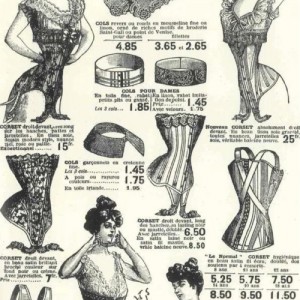The Real Cost of Cheap Lingerie: Why Who Made Your Intimates Matters
When I started she and reverie, I knew I wanted to work with factories in New York City because it’s the easiest way for a Brooklyn-based independent apparel line to start production. There are so many benefits to manufacturing locally for indie designers. We can go to the factory in person and make sure a garment is being sewn to our quality specifications; minimum orders are relatively low; and generally, there's only about a two-week turnaround from the time the factory gets all the materials and patterns, to the time garments are finished and ready to be shipped to stores.
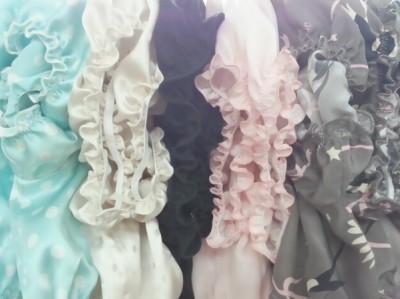
Silk tops by she and reverie hanging in their Manhattan factory
Even more importantly, it means we can monitor the conditions of the factories that create our garments. Given today’s globalized, technologically-advanced society, it’s easy to imagine automated machines churning out thousands of panties per hour, but that’s not the case. The price of clothing has actually gone down in the last twenty years, so we expect to pay very little for what we wear. Combine that with the low prices of outsourced labor, and you get very little demand for better manufacturing technology. Those classic photos of 1920s clothing factories, depicting rows of people sitting behind industrial sewing machines, are shockingly similar to photos today.
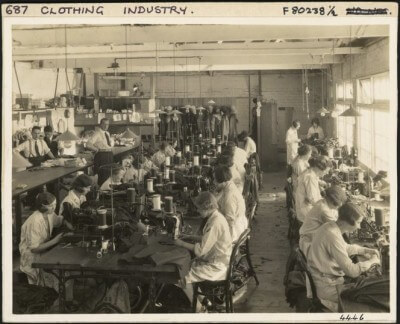
Photograph of a clothing factory, 1920s. Ref: PAColl-9472. Alexander Turnbull Library, Wellington, New Zealand.
This means that, in order to keep costs low, factories often exploit the people working for them. A perfect example is the disaster at Rana Plaza in Bangladesh in 2013. When factory owners ignored orders to evacuate the building, it collapsed, killing over 1,000 people and injuring thousands more. Meanwhile, there are children working 11-hour days, workers being physically abused, and padlocks on fire escapes in Bangladeshi factories. There are “mass faintings” in Cambodian factories. These labor issues are not isolated, nor are they a thing of the past.
This human aspect is especially important in lingerie manufacturing, where a hand-operated machine or someone with a simple needle-and-thread sews embellishments like tiny bows and cut-out lace. These details are popular on even the most budget-friendly garments, which can lead to factory workers earning well under a living wage. That's why, as consumers, it’s so important to know where our lingerie comes from: garment workers manufactured every single piece of lingerie we own, regardless of cost. These workers even make the bow-embellished five-for-$25 panties easily picked up at the mall. And when we purchase lingerie from large chain stores and international brands, we typically don’t know anything about the conditions of the factories they use. Is cheap lingerie worth the exploitation of human beings?
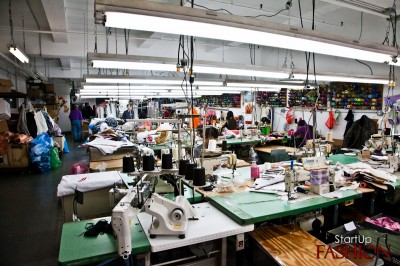
Apparel factory in New York City, 2011, via StartupFashion
That question has launched so many lingerie labels in the past decade, including my own, but it’s not always easy, convenient, or affordable to shop locally for ethically-manufactured lingerie. Brick-and-mortar stores can be hesitant to take a chance on a new label, and online shopping can be inconvenient, especially when you’re shopping for something last-minute. Because workers are being paid adequate wages, ethically-made lingerie is naturally more expensive. However, if we’re lucky enough to be able to make the choice, shouldn't we choose to purchase lingerie that we know was made under safe conditions? Plus, more demand for ethically-made lingerie means more accessibility. Labels committed to manufacturing ethically are gaining traction in the industry — and the best part is, they’re affordable, too. For instance, the ever-popular Hanky Panky is entirely made in the USA, and Miami-based label Cosabella still manufactures all their products in Italy; both countries have relatively strict labor laws, so you can be sure their workers are paid fair wages.
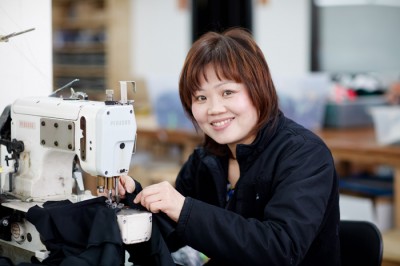
A garment worker at the Dear Kate factory in Queens, NY. Photo by Brister Photo.
Here in New York, our locally-made lingerie industry is booming, from luxury labels like ARI DEIN to edgy, Brooklyn-based lines like NaïS. Across the country, Trashy Lingerie still makes their custom Trashy Original line in Downtown LA, as does the cute and eco-friendly label Clare Bare. If you’re not in the US, there are so many independent labels making lingerie domestically all over the world — Hopeless Lingerie creates their gorgeous pieces by hand from their studio in Melbourne, and Catherine at Kiss Me Deadly has a large list of brands that manufacture in the UK.
Whether we purchase a one-of-a-kind made-to-measure camisole from someone like HoneyCooler Handmade, a set of high-tech undergarments from NYC-made label Dear Kate, or a lace-trimmed mass-produced chemise from a chain lingerie store, remember that people just like us made those garments. When we choose to purchase ethically-manufactured lingerie, we’re telling those brands that we believe in what they do, that we care about their workers, and that we support the future of ethically-made lingerie. Because no one should suffer for our lingerie.





